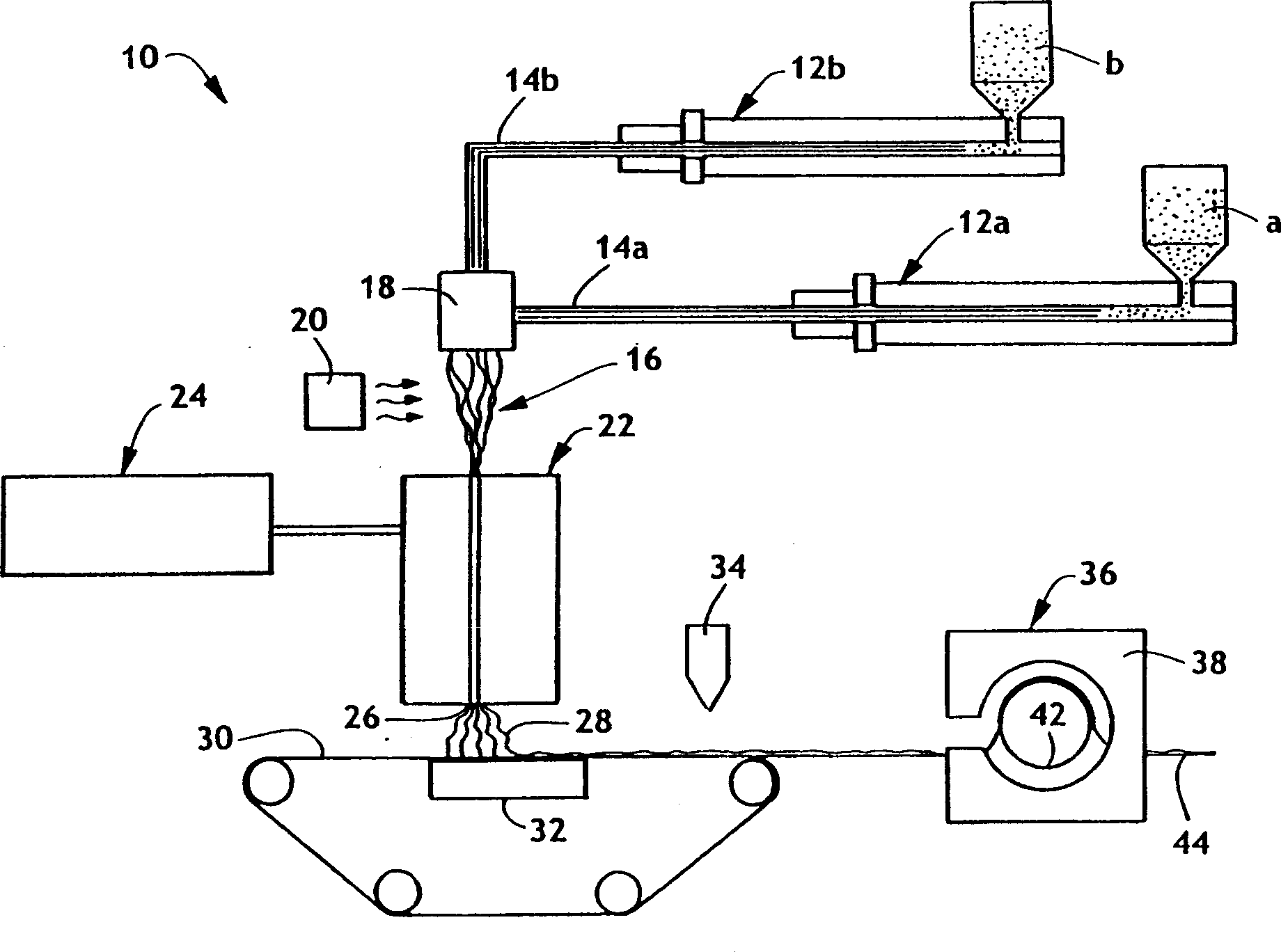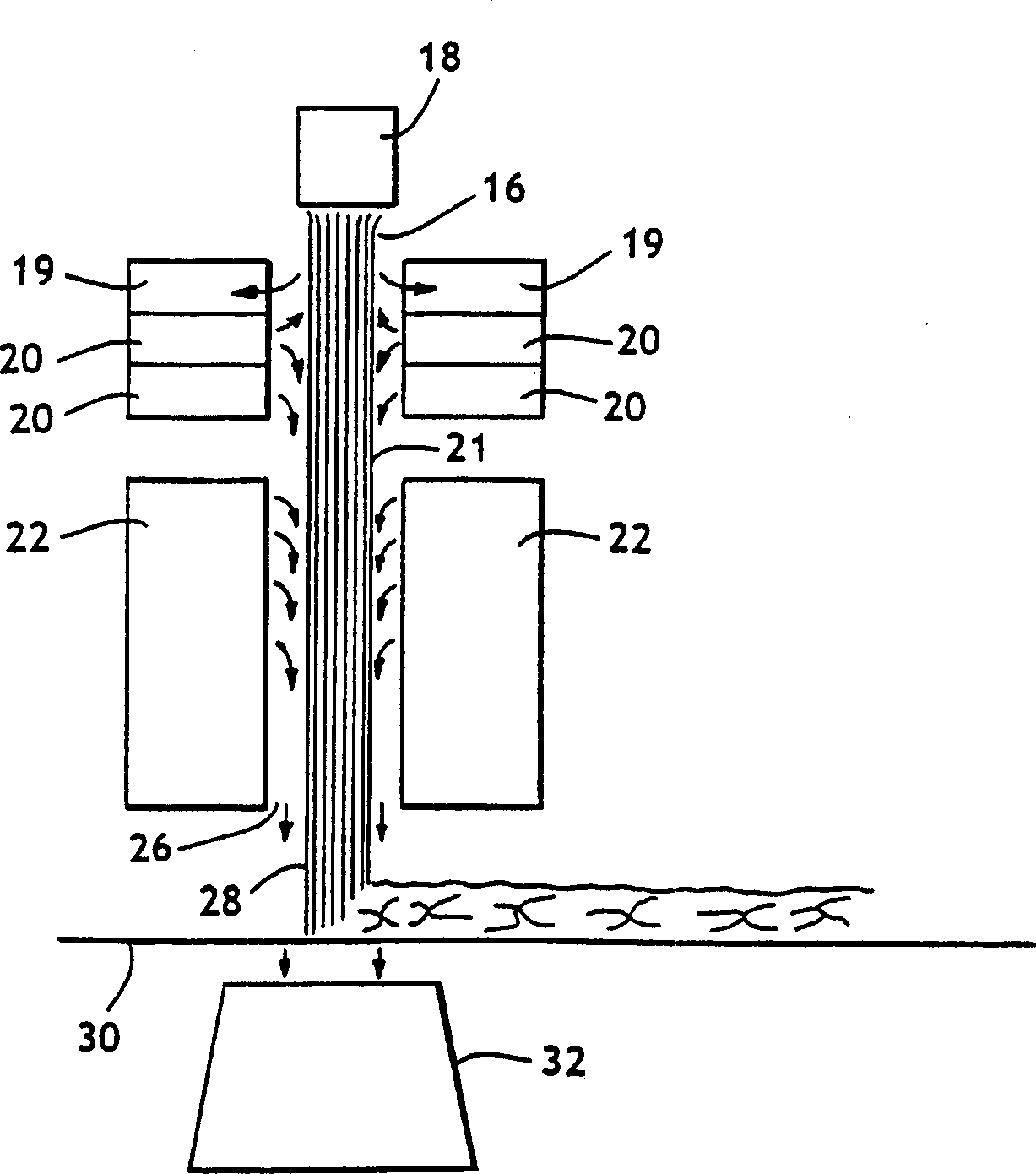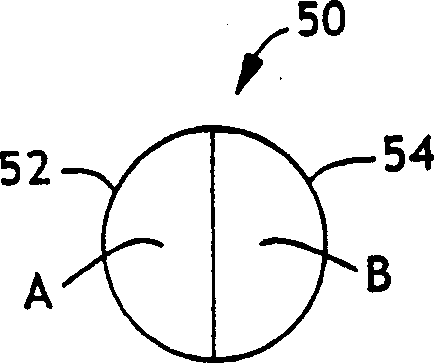Crimped multicomponent fibers and methods of making same
A technology of multi-component fibers and manufacturing methods, applied in fiber processing, melt spinning, non-woven fabrics, etc., can solve the problems of increasing basic investment production costs, bulkiness, basis weight and overall uniformity fluctuations
- Summary
- Abstract
- Description
- Claims
- Application Information
AI Technical Summary
Problems solved by technology
Method used
Image
Examples
example 1
[0061] Example 1: Component 1 comprises a conventional propylene polymer (sold by Exxon Chemical Company under the trade name ESCORENE and the designation Exxon-3445, which has an MFR equal to 35, a polydispersity index of 3 and a density equal to 0.9 g / cm 3 , flexural modulus 220,000 psi, yield tension 5000 psi) and 2 wt% titanium dioxide. The second component comprises a metallocene catalyzed propylene polymer (sold by Exxon Chemical Company under the trade name ACHIEVE and the designation Exxon-3854, which has a melt flow index equal to 25 and a polydispersity index of 2). The formed spunbond web contains helically crimped fibers.
example 2
[0062] Example 2: The 1st component contained a conventional propylene polymer as in Example 1 and 2 wt% titanium dioxide. The second component comprises an amorphous propylene / ethylene copolymer (sold by the company Huntsman under the trade name REXFLEX FLEXIBLE POLYOLEFINS and designation W201, MFR equal to 19, tensile modulus 6, density 0.88 g / cm 3 ). The formed spunbond web contains helically crimped fibers with excellent "stretch and recover" properties.
example 3
[0063] Example 3: The 1st component contains the conventional propylene polymer as in Example 1 and 2 wt% titanium dioxide. The second component comprises an amorphous propylene homopolymer (sold by the company Huntsman under the trade name REXFLEXFLEXIBLE POLYOLEFINS and designation W104, MFR equal to 30, tensile modulus 14, density 0.88 g / cm 3 ). The formed spunbond web contains helically crimped fibers with excellent elongation and recovery properties.
PUM
| Property | Measurement | Unit |
|---|---|---|
| flexural modulus | aaaaa | aaaaa |
| flexural modulus | aaaaa | aaaaa |
| enthalpy of fusion | aaaaa | aaaaa |
Abstract
Description
Claims
Application Information
 Login to View More
Login to View More - R&D
- Intellectual Property
- Life Sciences
- Materials
- Tech Scout
- Unparalleled Data Quality
- Higher Quality Content
- 60% Fewer Hallucinations
Browse by: Latest US Patents, China's latest patents, Technical Efficacy Thesaurus, Application Domain, Technology Topic, Popular Technical Reports.
© 2025 PatSnap. All rights reserved.Legal|Privacy policy|Modern Slavery Act Transparency Statement|Sitemap|About US| Contact US: help@patsnap.com



